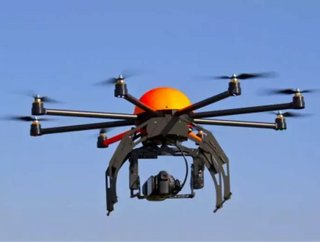Amazon unmanned drones, biggest development for years?

Written by Sam Phipps, business and marketing enthusiast at Sheffield Hallam University
Over the last few decades, supply chains have been adapted beyond recognition. Whereas manufacturing plants once hummed with the sounds of a busy work force, modern supply chains today have replaced man power with advanced robotics and automated technologies. Whether it concerns an automated production process or management tool, automated technology is present in virtually every modern supply chain. While there is no denying that the development of such technology has vastly improved supply chain efficiency, are we ready for the next generation of automated solutions?
One of the most controversial developments to emerge in recent times is Amazon’s plans to introduce delivery drones across their operations. According to speculation, the drones, known as “Octocopters”, would be capable of delivering customer’s packages within a 10 mile radius of the launch site. Despite a limited load capacity of just 2-3 kilograms, the drones would still be suitable for delivering up to 80% of amazon’s packages.
Although Amazon’s drones have received a lot of media interest, the online retailer is not the only business to realize the potential of drone technology. Over the last 12 months, Google has acquired a number of American and Japanese robotics and automated technology companies. While Google has remained quiet about their intentions, rumors suggest that the technology will be used to support manufacturing, assembly and warehousing operations. Although details are sketchy, some reports go on to imply that Google intends to combine the newly acquired technology with their driverless vehicles in order to achieve a fully automated supply chain which encompasses everything from the production of goods on the factory floor right through to the delivery of the final product to the customer’s doorstep.
Before Amazon and Google can move forward however, both companies have some huge hurdles to overcome. For instance, one of the biggest issues is with regards to public perceptions of drones. At present, unmanned vehicles are more readily associated with spying and mass surveillance than for delivering books and games. Given how the current uses of drones have divided opinions, commercial drones have a lot to prove before they are welcomed into neighbourhoods to deliver goods.
The other issue with using drones in the supply chain, particularly with regards to making deliveries, is the level of security unmanned drones would be able to provide. Considering that at present there is little to protect drones or their load from being stolen, it could leave the supply chain exposed to an increased level of theft. Although it sounds very far-fetched, there is even some concern that the drones could be treated like clay pigeons and used for target practice.
These issues aside, the potential benefits of integrating drone technology into the supply chain are obvious for businesses. Take for instance Amazon’s flying delivery drones; given that the Octocopters are expected to achieve 30 minute delivery windows, drone technology could provide firms with a whole new level of flexibility. Furthermore, while humans are subject to fatigue and boredom, automated drones could potentially keep the supply chain operating 24/7, 365 days a year. Thus the introduction of drones would dramatically increase a business’s supply chain capacity.
Although the concept of using unmanned drones to automate the supply chain is still very much in its infancy, it would appear that both businesses and the government are taking this technology seriously. For example, the US Aviation Administration has already announced six states where commercial drones will be tested to research how the technology would operate in America’s already congested airspace as well as the potential impact of commercial drones on local communities. If the tests are successful, over 7,500 drones could be operational within the next 5 years.
If the technology does ever become a reality, it could prove to be the biggest development in logistics since the emergence of the internet. While it may still be a few years yet before the technology is made available to businesses, would you ever consider integrating drones into your supply chain? If you were to utilize such technology, how do you envisage it would impact your operations?
- Explained: What is the SBTi’s Land Transport Guidance?Sustainability
- Top 100 Women 2024: Taryn Thompson, Bank of America – No. 4Sustainability
- KPMG and ASCM Unveil Latest Supply Chain Stability IndexSupply Chain Risk Management
- How GenAI Changed the Supply Chain and Retail Space ForeverTechnology






